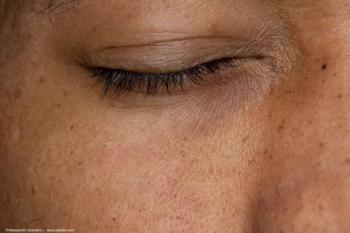
Managing Patients With Dry Eye and Glaucoma
Experts discuss their experience managing patients with dry eye disease and glaucoma, highlighting how dry eye disease impacts the progression of glaucoma and key considerations for treatment.
Episodes in this series

Transcript
Marguerite McDonald, MD, FACS: Managing [patients with] dry eye and glaucoma can be very challenging. And given the prevalence of [patients with] coexisting dry eye and glaucoma, how do you think dry eye disease might impact the progression of the patient’s glaucoma?
Peter McDonnell, MD: One of the real problems that the literature is very clear on is getting patients with glaucoma to adhere to therapy. [It’s very difficult] to say the least. Some studies suggest only 25% of patients fully adhere to topical therapy. [This is often] because of the problems they get from this chronic administration of preserved medications. Their eyes are red and irritated, and they’re not necessarily noticing benefit from the medications they’re using because, even if it does control the pressure, they don’t really notice any improvement in vision. Maybe they notice things getting worse because their eyes [don’t] feel as good and maybe don’t look as good [due to] the redness and irritation. If I were a king, there’d be no preserved glaucoma medications. We’d get rid of all the preservatives and try to improve adherence to therapy by reducing the adverse effects we get from years and years of chronic administration.
Marguerite McDonald, MD, FACS: That’s a huge consideration when you’re choosing a medication that can exacerbate dry eye. So, you have a patient with dry eye [and a] patient with glaucoma; what are some of the first steps you take?
Karl Stonecipher, MD: I am going to be a bit controversial…. I think we’re a bit late to the party; Europeans figured this out before we did…. Paul Singh, Aik Ahmed, Steve Oll—a lot of these guys I talk to now [who] do a lot more glaucoma than I ever will or have—are now showing us how to take the patient away from putting the drops in. Now, I don’t denigrate drop therapy, because I think it works and we’ve shown it works, but we have the opportunities…to eliminate drops altogether. If we have that option, I’m going to tell the patient to take that.
Marguerite McDonald, MD, FACS: Totally. What are some of the options that would allow a patient to skip drops?
Karl Stonecipher, MD: Well, they do with (selective laser trabeculoplasty) SLT or MIGS [microinvasive glaucoma surgery]….
But we’ve got to become more proactive physicians [rather than reactive positions]. So, whether that’s dealing with diabetes and using something like Ozempic or whether that’s trying to deal with…cholesterol, we’ve got to become…proactive to prevent the disease. We’re all getting older and we think about what’s going to kill us at this point. That’s kind of morbid, I know, but you [have] to think, “How can I prevent dementia because my family has that?” Or “How can I prevent age-related macular degeneration because my family has that as well?” I think the same thing goes with these other disease processes.
Peter McDonnell, MD: The data I’ve seen from the academy and from the Medicare database, something like 85% of glaucoma procedures now are the MIGS, often at the time of cataract surgery. I’m not a glaucoma person and I have no financial relationship with any company that manufactures these devices, but I think this is a great help to patients. If they can either get off medications or instead of needing 2 or 3 medications, they only need 1, it has a major effect in terms of quality of life. Some doctors maybe [aren’t] used to…intraoperative gonioscopy. [There’s] a little bit of a learning curve…I really think more cataract surgeons should really look to offer that to their patients who are on any glaucoma medications at the time of cataract surgery.
Marguerite McDonald, MD, FACS: I 100% agree. And for patients who are not headed to the [operating room] for cataract surgery but who have serious ocular surface issues with glaucoma drops, what are your thoughts on the intracameral implants? There are 2 of them so far.
Karl Stonecipher, MD: I’ve worked with them. I don’t do a lot of glaucoma, but I think they’re the direction we need to head in. They’re easily implanted. You can do them if you feel comfortable with the slit lamp, or you can [lay them] back [and do them] under a simple surgical microscope…. I think that’s the way we have to go. I think the academy, [the American Society of Cataract and Refractive Surgery], a lot of the groups are trying to show us how we can make it easier on the patient—whether that’s postoperative cataract drops—anything we can do to make the number of drops less is important.
Transcript was AI-generated and edited for clarity.
Newsletter
Don’t miss out—get Ophthalmology Times updates on the latest clinical advancements and expert interviews, straight to your inbox.






















































.png)


